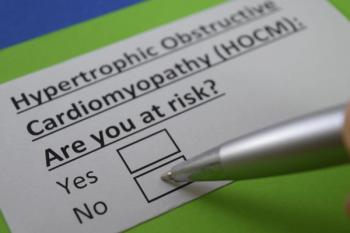On Monday, April 8, 2024, parts of the continental United States will experience the first total solar eclipse since August 2017, a celestial event that will not occur again in the country until 2044.1
Health care professionals, however, are urging individuals to take proper precautions when getting prepared to view the eclipse, especially in light of the risks of permanent eye damage and increased traffic incidents.
“The next total solar eclipse will occur on April 8, 2024, and is within driving range for more than 200 million individuals within the U.S.,” wrote the authors of a research letter published in JAMA Internal Medicine.2 Not to be confused with a partial solar eclipse or a lunar eclipse, a total solar eclipse is when, during daylight hours, the moon passes in front of the sun, totally obscuring the light reflected onto Earth and only leaving a narrow ring of light around the moon.3
Key Takeaways
- On April 8, 2024, parts of the continental United States will experience a total solar eclipse for the last time until 2044.
- Researchers addressed risks of permanent eye damage and traffic fatalities that could stem from the celestial phenomenon.
- There are a few safe viewing options to protect the eyes from retinal damage, while proper driving procedures should minimize traffic incidences.
With so many eyes preparing to focus on the event, it’s important to stay educated on the health risks it imposes. From more obvious risks such as eye damage resulting from looking directly at the eclipse to increased risks of traffic fatalities from the excitement surrounding the event, researchers assessed the 2024 total solar eclipse so that individuals can safely enjoy the phenomenon.
Safe Viewing of the Total Solar Eclipse
In the United States, the 2024 total solar eclipse will first be observable in Texas at around 1:30 PM Central Time. As the path of totality moves toward the northeast, the eclipse will be visible until around 4:30 PM Eastern Time, when the path will exit the country in Maine.4
“People viewing the eclipse from locations where the moon’s shadow completely covers the sun—known as the path of totality—will experience a total solar eclipse,” wrote NASA.4 “The sky will darken, as if it were dawn or dusk.”
The darkened sky is the main event, but it’s the moments directly before and after the total eclipse where chances of permanent eye damage can arise.
“Totality of the eclipse lasts only about 1 to 3 minutes based on geographic location, and bright sunlight suddenly can appear as the moon continues to move. Even a few seconds of viewing the sun during an eclipse can temporarily or permanently burn the macula. Once retina tissue is destroyed, it cannot regenerate, resulting in permanent central vision loss,” wrote Bressler et al.3
The macula is located in the center of the retina and is important for rendering objects and written text.5
READ MORE: Two Eye Diseases Could Contribute to Common Blinding Eye Condition
To prioritize retinal safety and eye health, researchers outlined 3 useful methods to safely view an eclipse.3
The first 2 options, which may require a visit to a local hardware store, are using either aluminized Mylar filter sheets or No. 14 welder glasses. Mylar sheets are not unlike 3D glasses distributed at movie theaters, while welder glasses may be the most protective option for directly viewing the eclipse.3
The third method for viewing the total solar eclipse—and probably the easiest to access—is the use of a pinhole projector.
“Make a pinhole in a piece of cardboard; hold it in front of the sun just before the eclipse,” continued Bressler et al.3 “With your back to the sun, focus the light going through the pinhole onto another piece of cardboard beyond the pinhole so that you see the sunlight focused onto the second piece of cardboard. As the eclipse occurs, you can see the focused sunlight become blocked by a dark circle (the shadow of the moon).”
Since the pinhole projector does not require individuals to look in the direction of the eclipse, it is indeed the safest option to see the phenomenon’s effects.
Researchers emphasized the importance of using one of these methods for viewing and to never look at the eclipse through binoculars, telescopes, a cellphone camera, or with the naked eye. They also urge anyone who experiences any type of eye damage to contact a local ophthalmologist immediately.3
Increased Risks of Traffic Fatalities During a Total Solar Eclipse
Researchers also evaluated the increased number of traffic incidences from the 2017 eclipse and assessed their findings to warn about the potential of heightened traffic during the upcoming 2024 eclipse.
In a matched case-control study, researchers used National Highway Traffic Safety Administration data to highlight car crashes that occurred during the 2017 total solar eclipse. Traffic incidences during the eclipse were then compared with separate 3-day control periods (August 13-15 and August 27-29) before and after the August 17 eclipse.2 The eclipse period was defined as the 3 days after the first control period and before the second control period (August 16-18).
There were 741 individuals who experienced a fatal car accident (10.3 per hour) during the eclipse period, compared with 1137 individuals who experienced a fatal crash (7.9 per hour) during the 6 control days.2
“In absolute terms, this averaged to 1 extra crash-involved person every 25 minutes and 1 extra crash fatality every 95 minutes [during the 3-day eclipse period],” wrote the authors.2
Despite the total eclipse causing partial visible light changes across the country, researchers realized that increases in traffic are to blame for the excessive risk of car crashes.
“Other potential factors include travel on unfamiliar routes, speeding to arrive on time, driver distraction by a rare celestial event, drug- or alcohol-induced impairment from eclipse-related celebrations, and eclipse viewing from unsafe roadside locations,” wrote the authors.2 “To help prevent another possible surge in traffic fatalities, clinicians might advise patients to respect speed limits, minimize distractions, allow greater headway, wear a seatbelt, and avoid driving while impaired.”
Finally, researchers encouraged individuals to experience the celestial event—but not before taking precautions.
“Individuals fortunate to be in the path of the total solar eclipse on April 8 should protect their eyes but enjoy the show; some locations of this total eclipse will not see another such event until 2044,” concluded Bressler.1
Visit NASA’s official website for more details on the 2024 total solar eclipse.
References
1. Bressler NM. Safely viewing a solar eclipse. JAMA Ophthalmol. Published online March 08, 2024. doi:10.1001/jamaophthalmol.2024.0401
2. Redelmeier DA, Staples JA. Fatal traffic risks with a total solar eclipse in the US. JAMA Intern Med. Published online March 25, 2024. doi:10.1001/jamainternmed.2023.5234
3. Bressler NM, Kong J, Arévalo JF. Safe viewing of solar eclipses. JAMA. Published online March 08, 2024. doi:10.1001/jama.2024.1302
4. 2024 total eclipse. NASA. Accessed April 2, 2024. https://science.nasa.gov/eclipses/future-eclipses/eclipse-2024/
5. Macula. American Academy of Ophthalmology. aao.org. Published March 28, 2016. Accessed April 2, 2024. https://www.aao.org/eye-health/anatomy/macula-6












































































































































































































